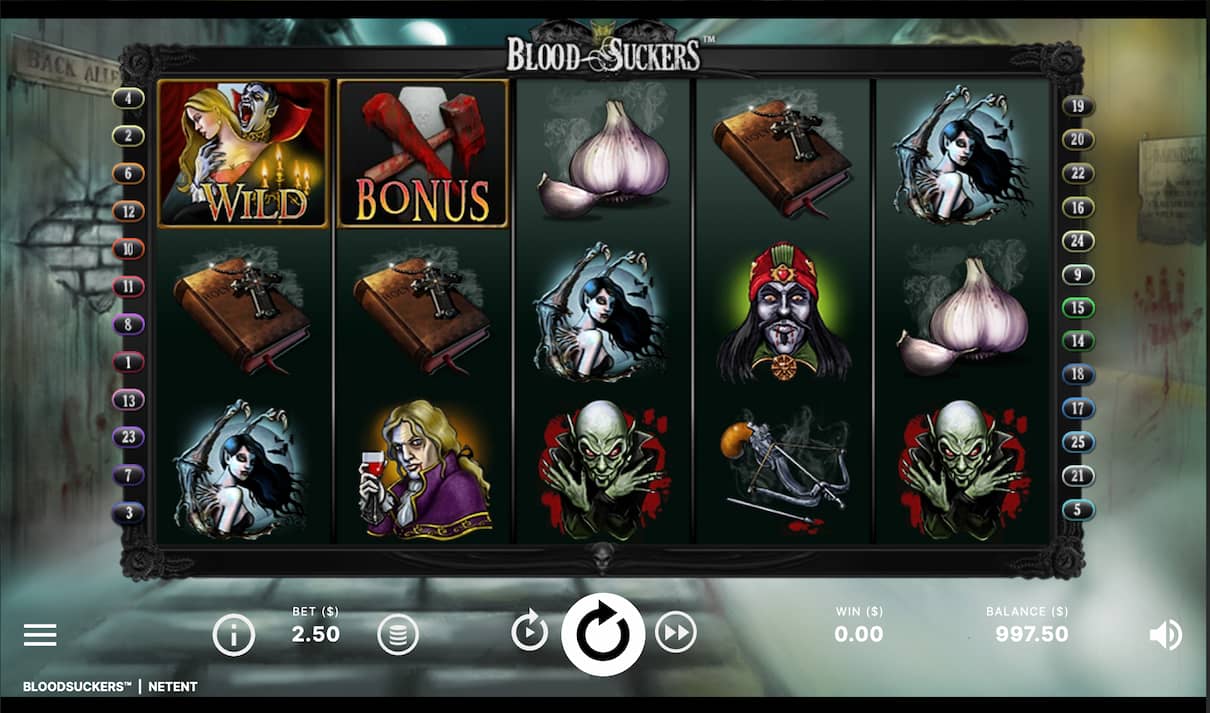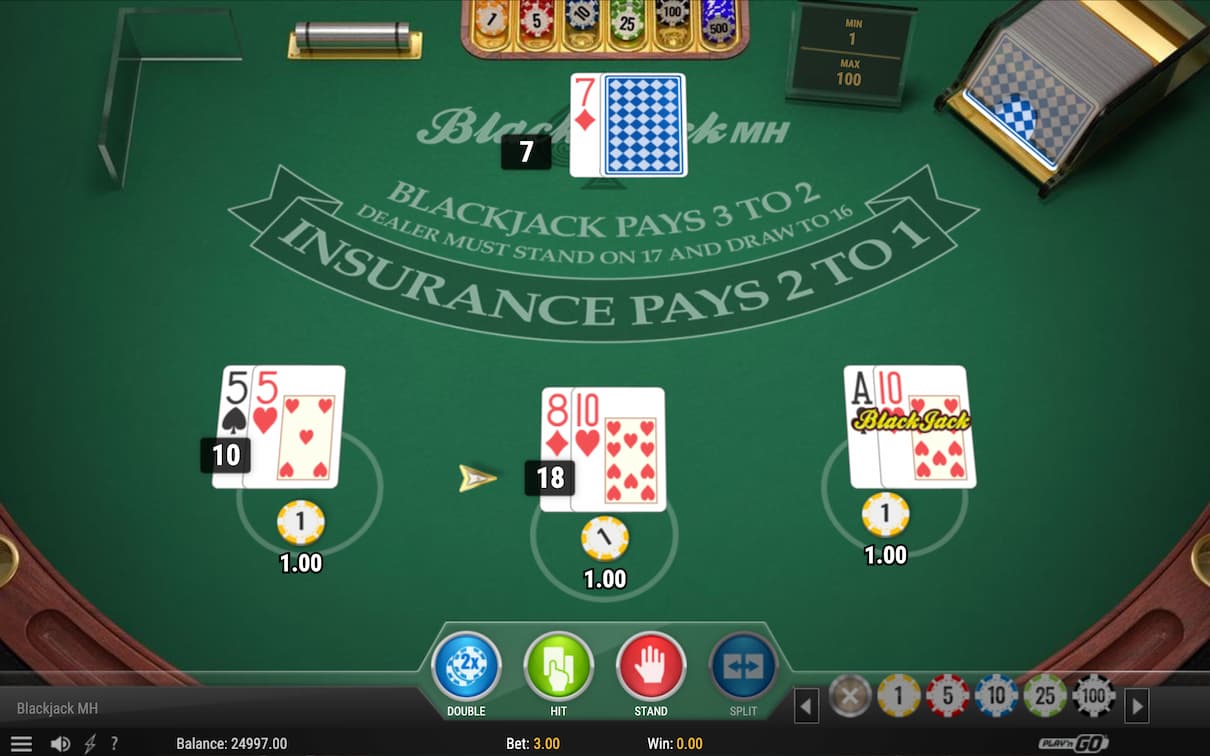What does RTP Mean? Return to Player Explained
Matteo Farina, Senior Editor
Last Updated: 26/08/2025
Darragh Harbinson, Senior Editor
Fact-checker
If you’ve ever played online slot games, understanding RTP, or Return to Player, is key to making smarter choices and managing your bankroll effectively. In this guide, you’ll find everything you need to know about how RTP works, why it matters, and how it affects your potential winnings. We’ll show you how to spot good RTP rates, the role of volatility, and how these factors combine to influence your gaming experience. Whether you’re new to online slots or looking to sharpen your strategy, this article offers clear, reliable insights tailored specifically for UK players.
- Show full guideShow less
What is RTP (Return to Player)?
RTP, or Return to Player, is a term commonly used in the gambling industry, particularly in slot machines and casino games, to describe the percentage of all money wagered on a game that is expected to be paid back to players over time. It’s a theoretical figure, calculated over millions of game rounds, that gives players an idea of how ‘generous’ a game might be.
In simpler terms, RTP reflects the portion of your total bets that the game is designed to return as winnings, with the remaining amount representing the casino’s profit (often referred to as the house edge).
Understanding RTP Percentages
RTP is always expressed as a percentage. For instance, if a slot game has an RTP of 96%, it means that for every £100 wagered, the game is programmed to return £96 to players over time, while the casino retains £4.
It’s important to note that RTP is calculated over a vast number of plays. This means short-term results can vary significantly – you might hit a big win or lose everything quickly – but over thousands of spins, the game’s returns should closely align with the stated RTP.
Example: What Does a 96% RTP Mean?
Imagine you’re playing a slot game with an RTP of 96% and you wager £1,000 over time. Statistically, the game is expected to return £960 to you in winnings, while £40 goes to the casino as profit.
However, real-life outcomes can differ in the short term:
- You could have a lucky streak and walk away with £2,000.
- Or you might lose your entire bankroll in a matter of minutes.
The key takeaway is that RTP provides an understanding of a game’s payout potential over time, but it doesn’t guarantee specific results in any single session. It’s a useful metric for comparing games and managing expectations while playing.
What is RTP and How Does it Work?
Return to Player (RTP) is a crucial concept in understanding how casino games return a portion of the money wagered by players over time. Represented as a percentage, it reflects the long-term payout potential of a game. However, RTP isn’t a guarantee of individual results – it’s an average calculated over thousands (or even millions) of rounds. It serves as a helpful tool for evaluating a game’s fairness and level of risk before you take a punt.
A Long-Term Statistical Model
RTP is based on a long-term statistical model, derived from analysing millions of game rounds or spins. Game developers and casinos use this data to calculate the percentage of total wagers that will, over time, be returned to players.
Think of it as the average result you’d see if you were to play a game an infinite number of times. While you may experience streaks of wins or losses in the short term, RTP reflects the expected average return over time, smoothing out these fluctuations.
For example, if a slot game has an RTP of 95%, this doesn’t mean every player will get 95% of their money back in one session. Instead, it means that across millions of spins, the average return to all players would be about 95%.
Clearing Up Common Misconceptions About RTP
One common misunderstanding is that RTP predicts your individual results in a single gaming session. This is false. RTP is a theoretical figure, calculated over a vast number of plays, and doesn’t apply to short-term outcomes.
Here are some key points to remember:
- ➡️ RTP doesn’t guarantee wins or losses on specific spins. Each spin’s outcome is random and independent.
- ➡️ You could win big on a game with a low RTP or lose on a game with a high RTP in the short term.
- ➡️ RTP is simply a statistical average, not a forecast or guarantee.
The Difference Between Theoretical and Actual RTP
- Theoretical RTP is the percentage programmed into a game’s software, verified by gaming regulators. It represents the expected payout over millions of plays.
- Actual RTP, however, is what players experience in real life. It can vary significantly due to chance, the number of plays, and the game’s variance.
For example, if you play a slot with a theoretical RTP of 96%, you might hit a massive win early on and exceed that return, or lose several times in a row and fall below it. Over time, as more spins are played, the actual RTP tends to align with the theoretical RTP.
RTP vs Casino Edge
RTP and house edge describe the same concept from opposite viewpoints. RTP focuses on what the player can expect to get back, while house edge shows what the casino aims to keep.
Term What It Means Who It Benefits RTP The percentage of total bets returned to players over time Player-focused House Edge The percentage the casino keeps as profit over time Casino-focused Simple Formula: House Edge = 100% – RTP
The relationship between RTP and House Edge is straightforward:
House Edge = 100% – RTP
For example, if a game has an RTP of 96%, the house edge is:
100% – 96% = 4%
This means the casino expects to keep 4% of all money wagered on that game over the long term.
Real-World Examples
- 🎰 Slot Machines: A popular slot might have an RTP of 95%, meaning the house edge is 5%. For every £100 wagered, the casino expects to keep £5 on average, returning £95 to players over time.
- 🃏 Blackjack: With perfect strategy, blackjack can have an RTP of up to 99.5%, leaving the house edge at just 0.5%. This makes it one of the most player-friendly games in a casino.
- 🎲 Roulette: European roulette has an RTP of 97.3%, meaning the house edge is 2.7%. In this case, the casino retains around £2.70 for every £100 wagered.
Why RTP Matters
Understanding RTP helps players make informed decisions about which games to play. While luck plays a big role in short-term outcomes, knowing a game’s RTP can give you a clearer sense of its potential fairness over time. Whether you’re spinning the reels or placing bets at a table, RTP is a key factor to consider as you navigate the world of online or in-person gambling.
High RTP vs Low RTP Slots: What You Need to Know
When it comes to RTP (Return to Player), a “high” RTP typically means anything over 96%. Slots with a high RTP are favoured by players who want to stretch their bankroll and enjoy longer gaming sessions, often leading to regular small wins. These games are especially popular with seasoned players who value steady wins and low-risk gameplay.
Top High RTP Slots You’ll Love
- Mega Joker (NetEnt): This classic slot offers an RTP of up to 99%. With its simple design and rewarding Supermeter mode, it’s a must-try for players who enjoy traditional slots.
- Blood Suckers (NetEnt): Ranking as one of the top 10 slot games to play to win money with an RTP of 98%, this fan-favourite vampire-themed slot offers regular payouts and low volatility. This makes it ideal for players who prefer smaller, consistent wins.
- 1429 Uncharted Seas (Thunderkick): Boasting an impressive RTP of 98.6%, this beautifully designed slot is perfect for low-risk gaming with a creative, nautical theme.
Comparing the Risks and Rewards of High and Low RTP Slots
High RTP slots are perfect for players who prefer a safer, more predictable gaming experience. While the payouts in these games are frequent, they tend to be smaller, and the jackpots are often modest. These slots are ideal for those who want to keep their betting balanced and avoid significant losses.
In contrast, low RTP slots, such as progressive jackpot games, come with higher volatility and larger potential payouts. Wins may be less frequent, but when they land, they can be life-changing. These slots appeal to players who enjoy excitement, higher stakes, and the thrill of chasing massive wins.
Whether you’re after the security of high RTP slots or the adrenaline of low RTP games, there’s something for everyone in the diverse world of online slots.
How to Use RTP When Picking a Game
When choosing a casino game to play, understanding RTP (Return to Player) is a key part of your strategy. RTP gives you a clear idea of how much of your bets you might get back over time, helping you make smarter decisions.
By comparing the RTP of different games, you can choose ones that suit your risk tolerance, playing style, and goals. Whether you’re after frequent smaller wins or prefer to take bigger risks for larger payouts, RTP serves as a useful guide to finding the right games for you.
Why RTP Matters to Players
Return to Player (RTP) is an important factor that every player should consider when picking a game. It shows the long-term payout potential of a game, expressed as a percentage. For example, a game with an RTP of 96% would theoretically return £96 for every £100 wagered over a long period.
Knowing this helps you make choices that align with your risk appetite and gaming preferences, whether you’re seeking consistent small wins or taking a shot at big rewards.
💡Pro Tip: Using casino bonuses on a high RTP slot can improve your chances of meeting the wagering requirements. The higher the return to player, the more of your bonus balance you’re likely to retain during play.
How RTP Impacts Your Strategy and Bankroll
High RTP games are a good fit for players who want steady gameplay with less risk and minimal changes to their bankroll. These games usually offer frequent but smaller payouts, making them perfect for those with limited budgets or who want to extend their playing time. On the other hand, low RTP games, often linked to progressive jackpots or high-volatility play, demand a bigger bankroll and a more aggressive strategy.
In these games, you may go longer without winning, but have the chance to land a massive payout. Balancing RTP with your risk appetite is crucial for making your gaming experience enjoyable and sustainable.
Where to Find RTP for a Game
Most games, especially online casino games offered by various slot providers, clearly display their RTP. You’ll usually find this information in the game rules, pay table, or help section. Some of the leading mobile casinos even list RTPs alongside games in their libraries, making it easier for players to compare their options while scrolling.
For even more detailed research, you can check independent review sites or trusted forums where experts often analyse and publish game metrics, including RTP percentages. Always ensure you’re getting RTP numbers from reputable sources to ensure they’re accurate and trustworthy.
RTP vs Volatility: What’s the Difference?
Now that you understand what RTP is, it’s helpful to look at how it compares to volatility. While RTP tells you the average return over time, volatility explains the risk level and payout behaviour of a game. Together, these two factors give a clearer picture of what kind of slot experience to expect, whether that’s steady, low-risk play or infrequent but larger potential wins.
Feature RTP (Return to Player) Volatility (Variance) Definition The percentage of total bets returned to players over time The frequency and size of payouts in a game Focus Long-term expected returns Risk level and payout pattern A Higher Value Means A higher percentage of your stake may be returned over time Bigger wins are possible, but they occur less frequently A Lower Value Means A smaller portion is theoretically returned over time Wins happen more often but tend to be smaller How Volatility Shapes Gameplay Compared to RTP
RTP shows you the average return over time, but volatility determines the experience you’ll have while playing:
- Two games might both have an RTP of 96%, but their volatility could make them feel completely different.
- A high volatility game may have long stretches without wins but offers the possibility of a big payout that can boost your balance significantly.
- A low volatility game provides more regular but smaller wins, keeping your bankroll steady while offering fewer opportunities for massive payouts.
While RTP gives you the maths, volatility shapes the emotional side of gameplay, influencing how risky the game feels and how long your budget might last.
How to Combine RTP and Volatility When Picking Games
For the best gaming experience, consider both RTP and volatility together:
- If you prefer frequent, smaller wins and want to play for longer, go for games with high RTP and low volatility.
- If you’re comfortable taking bigger risks for the chance of a significant payout, choose games with high RTP and high volatility.
- Avoid games with low RTP, regardless of volatility, as they give the casino a bigger edge.
By understanding both RTP and volatility, you can pick games that match your playing style, risk comfort, and budget. With this knowledge, you’ll make smarter, more enjoyable gaming choices.
RTP in Online Casinos vs. High-Street Casinos
Choosing where to play can influence the RTP percentages you’re likely to see. Many of the best payout online casinos offer higher returns than their high-street counterparts, largely due to lower overheads. While the concept of payout percentage stays consistent, differences in operating costs mean that online and land-based casinos often have distinct return profiles.
Casino Type Typical RTP Range Why It Matters Online Casinos 95% – 98%+ Lower overheads allow for more competitive RTPs, giving you better long-term value High-Street Casinos 85% – 95% Higher running costs often lead to lower RTPs, meaning a slightly bigger house edge Greater Transparency in Online Platforms
Safe and trusted casinos in the UK are typically more upfront about RTP percentages compared to their high-street counterparts:
- Most reputable online casinos display RTP figures for each game, often found on the game’s information page or within dedicated sections on their websites.
- This allows players to make informed choices, opting for games with better payout potential.
- Online games are also regularly audited by independent testing agencies, such as eCOGRA or iTech Labs, to verify RTP accuracy, fostering trust and confidence among players.
Stronger Regulatory Standards for RTP Disclosures
The UK boasts one of the most stringent gambling regulatory frameworks, overseen by the UK Gambling Commission (UKGC). This includes strict rules around RTP transparency:
- UK-licensed online casinos must meet specific RTP standards and clearly display these figures to players.
- Regular audits of game software are required to ensure RTPs are accurate and compliant with declared values, protecting players from unfair practices.
- High-street casinos in the UK, while still regulated, are often less transparent about RTPs, and their games may not undergo the same level of independent auditing as their online counterparts.
Understanding RTP: What It Means for Players
RTP (Return to Player) gives players an idea of how much they can expect to get back over time when playing casino games or engaging in sports betting. However, it’s important to remember that no strategy can alter these percentages. RTP is calculated based on millions of gameplay outcomes, so it’s not designed to predict short-term results. Still, knowing about RTP, coupled with smart gameplay, can help you make better decisions and potentially stretch your playing time, making your overall experience more enjoyable.
Can You “Beat” the Odds?
RTP represents the average return to a player over the long term, but that doesn’t make games unbeatable. In pure chance games such as slots or online roulette, the odds are always set in favour of the house. These games rely on random number generators (RNG), making it impossible to consistently beat the RTP or overcome the house edge in the long run.
That said, short-term wins that exceed the RTP are possible, but they’re entirely unpredictable. It’s important to see RTP as an average over time, not a guarantee for each individual session.
Can Strategy Help in Skill-Based Games?
While chance-based games like slots and roulette don’t rely on strategy, skill-based games such as blackjack, poker, and video poker allow players to influence outcomes with the right approach:
- Blackjack: Using basic strategy – making optimal decisions about when to hit, stand, or double down – can significantly reduce the house edge. In some cases, RTP can approach 99% or higher for skilled players. Advanced techniques like card counting can even tilt the odds slightly in the player’s favour, though it’s not possible to implement at online blackjack casinos as cards are shuffled after each round.
- Poker: Since you’re competing against other players rather than the house, skill and strategy are key. Poker sites in the UK take a rake (a small percentage of the pot), so highly skilled players can consistently outperform their opponents and “beat” the odds.
- Video Poker: With certain variants offering high RTP, knowing the correct strategy is essential to maximise potential returns.
In these games, strategy can make a real difference, helping you get closer to the theoretical RTP or even come out ahead.
How Do Bonus Features Affect RTP?
Modern casino games are packed with bonus rounds, free spins, and multipliers that can influence overall RTP. Here’s how they work:
- 👉 Bonus features often raise the RTP, providing extra chances to win or larger payouts.
- 👉 Some bonuses create higher variance, meaning you may need to play longer to benefit from big rewards.
- 👉 Casinos calculate RTP by including these bonus features, so games with flashy and lucrative bonuses often advertise a higher RTP to attract players.
While these extras make games more exciting, they don’t guarantee wins. Bonus rounds simply add another layer of fun and variety to your gameplay.
Final Thoughts
Understanding how bonus features influence a game’s RTP (Return to Player) and variance is essential for making smarter decisions as a player. While bonuses can boost potential payouts and add excitement, they often come with higher variance and don’t guarantee wins. By getting to grips with these mechanics, you’ll be better equipped to choose games that suit your preferences and strategies.
Take the time to become an informed player. Read the game rules, check RTP percentages, and understand how different features affect your overall experience. Knowledge is key to increasing both your enjoyment and confidence when playing.
Finally, always prioritise responsible gaming. Set spending limits, know when to call it a day, and treat gambling as a form of entertainment, not a way to make money. Playing responsibly ensures a safer and more enjoyable experience for everyone, whether you’re having a flutter at the bookies or spinning the reels online.
FAQs
What does RTP stand for in online slot games?RTP stands for Return to Player, and it indicates the percentage of total wagers that a game is designed to pay back to players over an extended period. In online slot games, RTP helps you understand how the game’s settings are configured. While RTP doesn’t guarantee wins, it offers insight into how the games work in the long term.Are low RTP games worth playing in the long run?Low RTP games offer a lower return over time, meaning players are likely to get back less money compared to higher RTP games. However, they may still appeal due to engaging features or themes. Knowing how RTP works can help you decide whether these games align with your preferences and risk tolerance.What’s considered a good RTP for online slot games?A good RTP is typically 96% or higher, which means the game is programmed to return £96 for every £100 wagered over an extended period. This figure gives players a general idea of value. Many UK-licensed online slot games provide clear RTP information, often available in the game’s settings.How does RTP relate to medium volatility slot games?Medium volatility slots strike a balance between win frequency and payout size. When combined with a solid RTP, these games can offer a mix of frequent wins and decent returns. They’re a popular choice for UK players who want engaging gameplay without the extremes of low or high volatility slots.Does low volatility affect a game’s RTP?Low volatility games typically deliver frequent wins, although the payout amounts tend to be smaller. These games can still have a good RTP, depending on how the game’s settings are configured. For players who prefer consistency and a more relaxed playing style, low volatility games with fair RTPs can be ideal.Do high volatility slot games have better RTP?Not necessarily. While high volatility slots can offer larger payouts, they don’t always have a higher RTP. These games work by offering fewer wins, but with the potential for more money when they do pay out. Understanding how RTP and volatility interact helps players set realistic expectations based on their budget and goals.Resources
Matteo Farina, Senior Editor
Matteo is a seasoned writer and editor with over a decade of experience. This, combined with his deep industry knowledge—ranging from casino reviews and game strategy to regulatory insights—makes him a trusted voice in the field. He offers insights in an engaging and reader-friendly manner, ensuring you get all the details you need to start your online gambling journey.
This article has been Fact-checked by Darragh Harbinson
We prioritize accuracy, objectivity, and depth in every piece of content we produce. Our rigorous editorial standards ensure that all information is carefully sourced and fact-checked. Each article is meticulously reviewed by experienced editors and leading technology professionals to maintain the highest level of credibility and relevance. This commitment guarantees our readers content they can trust and rely on.
From breaking news and in-depth match analysis to exclusive interviews and behind-the-scenes content, we bring you the stories that shape the esports scene.
40k+Monthly Visitors
100%User Satisfaction
10+Years experience
Popular Pages
Explore Categories










